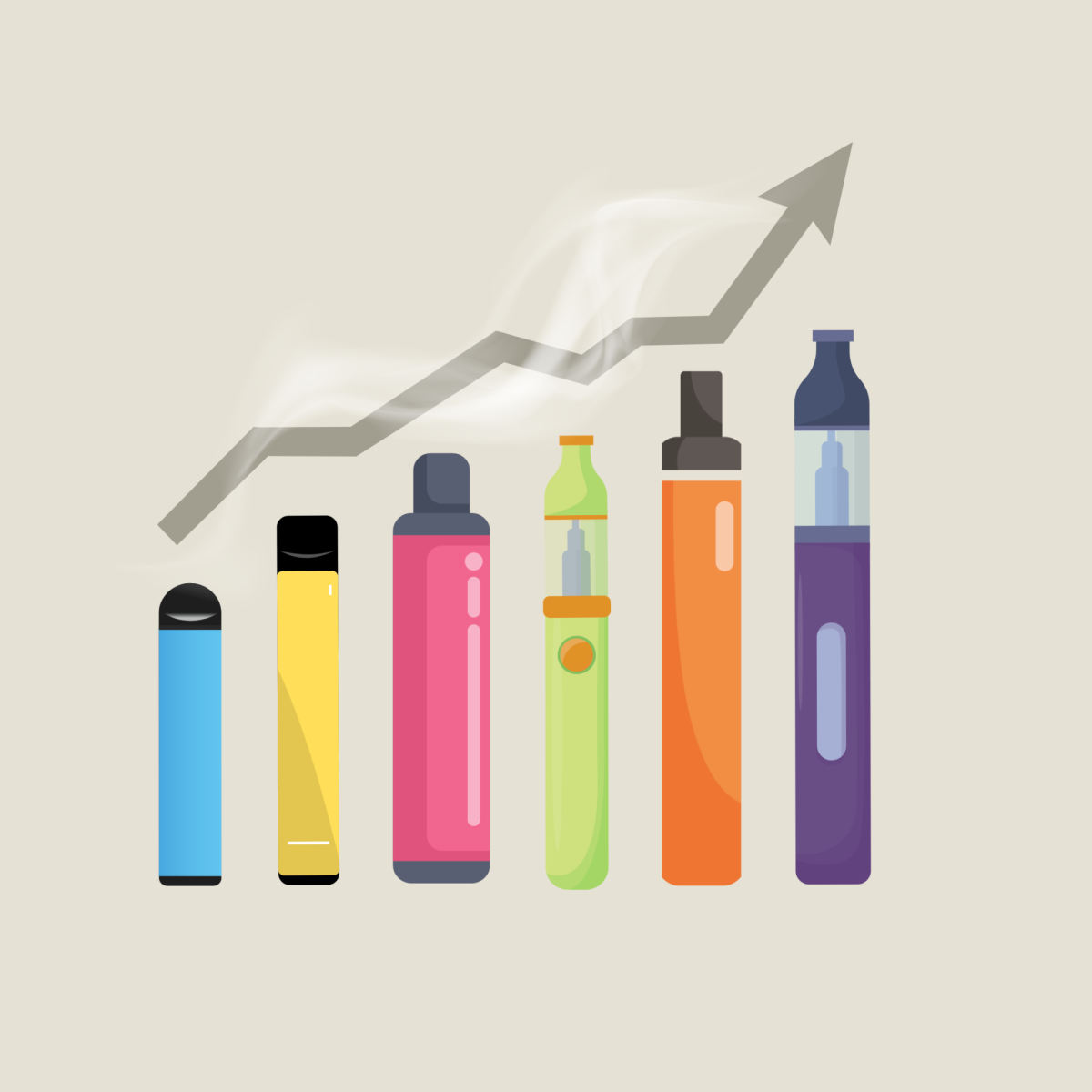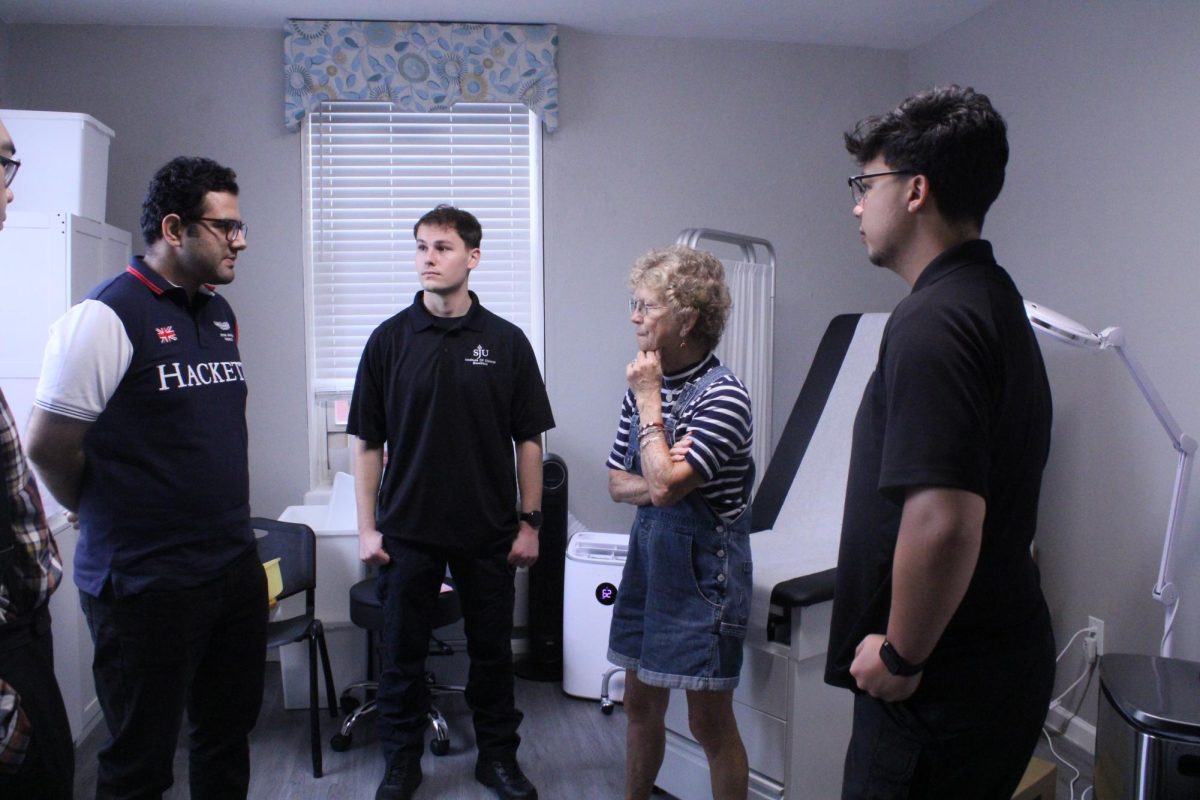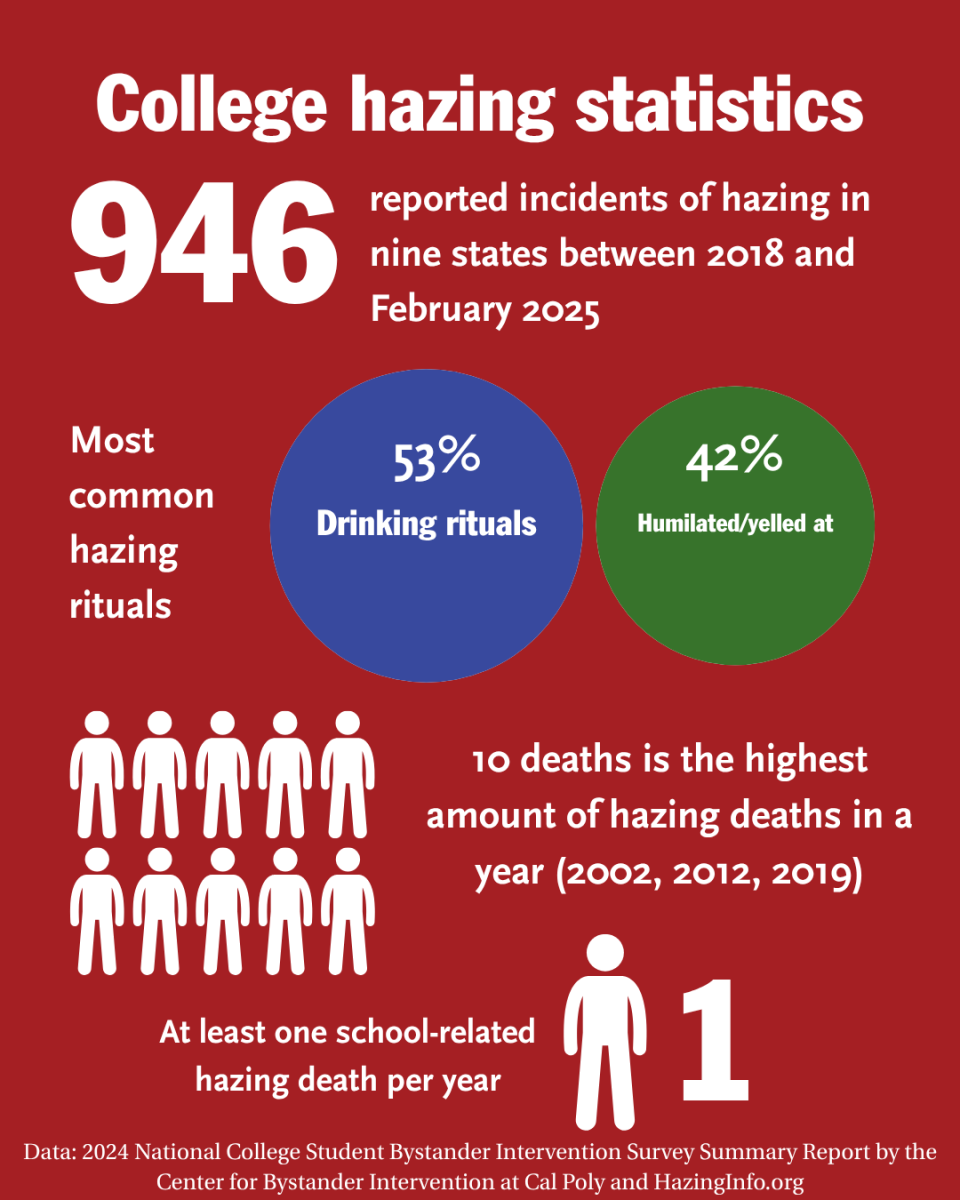Like many college students who vape, Kaleb Harris ’25 started in high school.
Harris said he vaped for the first time for the same reason many middle and high school students do: “The influence of my peers,” Harris acknowledged.
Vapes are electronic cigarettes designed for inhaling and exhaling a flavored nicotine solution that is heated by a battery-operated device. E-cigarettes first entered the U.S. market in 2006, with more advanced “pod-mod” versions like JUUL — designed to deliver higher levels of nicotine through pre-filled cartridges — arriving in 2015.
Although vapes are often marketed as tools for quitting smoking, they are rarely used for this purpose by young people.
In 2024, 1.63 million, or nearly 6% of all U.S. middle and high school students, reported using e-cigarettes, according to the U.S. Centers for Disease Control and Prevention (CDC). That is the age when most tobacco use begins, the CDC report stated.

Peer influence
Eileen Bevilacqua, RN, director of the Student Health Center, said she has seen vaping become more common among students.
“Peer influence is one of the most common drivers of teen e-cigarette use according to the literature,” Bevilacqua said, adding that social settings often encourage students to try vaping without fully considering the risks.
Harris agreed vaping is socially accepted among his peers.
“It’s not looked down on. It’s low-key integrated into alcohol culture a little bit now,” Harris said. In the past, people would pair drinking with smoking cigarettes, he said, but now vapes have replaced traditional cigarettes.
Research shows that many people may seek nicotine when they drink because alcohol and nicotine trigger the same reward systems in the brain. This combination magnifies the effects of each substance, resulting in greater feelings of pleasure when alcohol and nicotine are consumed together.
Harris said he has continued to vape in college out of habit and to help manage anxiety.
“It’s like a fixation,” Harris said. “Some people fidget, some people play with their hair, but for me, it’s vaping.”
Harris said while he could go weeks without vaping, having it within reach makes it easy to slip back into the habit.
“It’s everywhere,” Harris said. “I can vape almost anywhere without people noticing or caring, and that definitely makes it tempting to use it more often.”
Vape sales
Monthly sales of e-cigarettes have risen steadily since 2020, according to a CDC study. From January 2020 to December 2022, they increased by 46.6%. The CDC attributes that increase to the availability of flavors — fruit, candy, desserts — that appeal to young people, more disposable products and an increase in the number of e-cigarette brands, which, in 2022, stood at 269. The top-selling disposable brands in December 2022 were Vuse, JUUL, Elf Bar (now EBDesign), NJOY and Breeze Smoke. Jack Stasio ’26, an employee at Haze City Smokes & Convenience on City Avenue across from Lannon and Rashford halls, said the shop is frequented by a steady flow of college-aged customers who often prioritize quantity over quality when selecting their vaping products.
“The more puffs you can get for the least amount of money, the better,” Stasio said.
The cost of a vape can range from $5 to $10.
Stasio’s customers frequently seek out rechargeable vapes with high puff counts and fruity flavors, Stasio said.
At Haze City, customers can choose from a wide range of flavors, including blackberry, mango, apple and strawberry.
Stasio said he suspects many of his younger customers may be unaware or dismissive of the health risks associated with their purchasing habits, favoring affordability and convenience over concerns about quality or safety.
Stasio also questioned the common assumption that vaping is a relaxing habit.
“Most use it to relax, but it’s not actually relaxing,” Stasio said. “You’re getting anxiety the entire time, and when you hit it, you get relaxed for a moment since you are addicted.”
Health risks
Despite vaping’s widespread popularity, health professionals are increasingly concerned about the risks. Bevilacqua said the health risks associated with vaping, especially for young people, extend far beyond nicotine addiction.
Vaping coats the lungs with harmful particles, including substances like diacetyl, which has been linked to a severe lung disease known as bronchiolitis obliterans or “popcorn lung.”
“Bronchiolitis obliterans, popcorn lung, results from inhaling diacetyl, which can cause inflammation and scarring in the smallest branches of the airways,” Bevilacqua said. “And vaping-related pneumonia, also known as lipoid pneumonia, develops when oily substances are inhaled.”
Additionally, heavy metals, such as nickel, lead and cadmium, all commonly found in e-cigarette vapor, can cause lung inflammation and potentially lead to irreversible damage, Bevilacqua said. The CDC has raised similar concerns, warning of the potential for e-cigarette vapor to introduce cancer-causing chemicals deep into the lungs.
Harris acknowledged the health risks, particularly the unknown long-term effects. He said his generation tends to downplay these risks, partly because vaping doesn’t involve traditional tobacco. But Harris said he is well aware that a single vape can contain as much nicotine as an entire pack of cigarettes. He also worries about the chemicals and lithium batteries in e-cigarettes, which add to the potential dangers.
“Even though we don’t know all the long-term effects yet, something is going to happen,” Harris said.
Harris said he has considered cutting back on vaping.
“It’s hard to get off, but my motivation is just being off of it before I graduate,” Harris said, adding that many of his friends share similar goals, hoping to quit before serious health consequences emerge.
This desire to quit is common among young people who vape. A CDC report from 2020 found that 63.9% of middle and high school students who vaped wanted to quit, and 67.4% had tried to quit within the last year.
Bevilacqua’s advice to students is direct: “Quit now. Nicotine replacement therapy can help.”
Bevilacqua encouraged students who are curious about quitting or concerned about their health to reach out to the health center or a primary care provider for additional support and resources.
Members of the St. Joe’s community seeking support are encouraged to contact the following resources:
Counseling and Psychological Services (CAPS), 610-660-1090
Student Health Center, (610) 660-1175 (Hawk Hill) and (215) 596-8980 (UCity)


















































